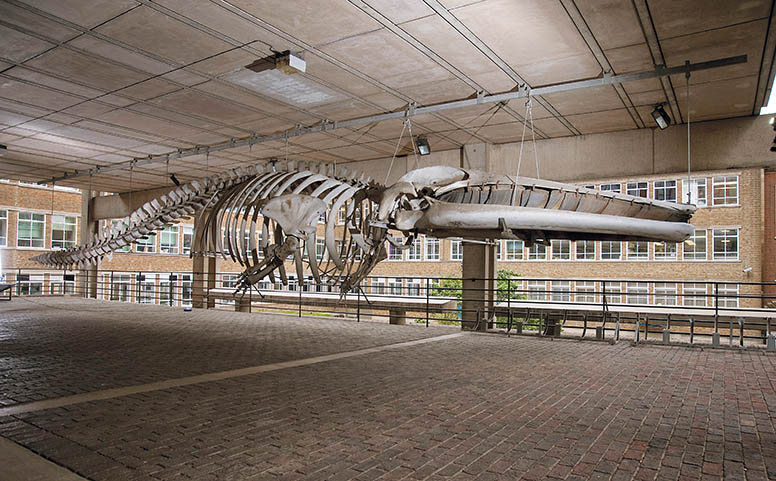Did you know there are over 12 museums in Cambridge? Or that museums reduce stress and make you happier? To mark International Museum Day (18 May) we’ve curated a hotlist of must-see artefacts from Cambridge’s diversity of museums. Take this checklist as your guide and embark on a cultural adventure via giant owls, amusing-shaped teapots, a mouse-nibbled skeleton, and other ancient wonders. Step aside, Indiana Jones…
Miniature of Queen Elizabeth I: Fitzwilliam Museum
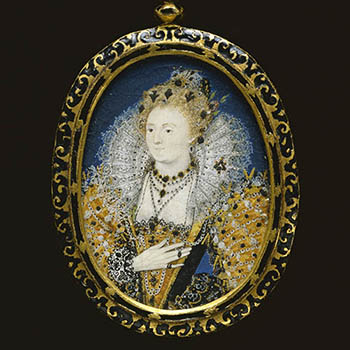
Cambridge’s Fitzwilliam Museum is full of treasures, but one of their most prized possessions can be easily missed. According to the museum, one of the exhibits that visitors most request to see is the miniature of Queen Elizabeth I.
Painted at the end of the 16th century, in the final years of her life, it depicts her in eternal youth. The artist Nicholas Hilliard was miniature portrait painter to Queen Elizabeth I and painted her many times throughout her reign. The jewels in the portrait are based on card symbols: diamonds, spades and clubs (the hearts suit is most likely represented by the Queen herself).
Iguanodon: Sedgwick Museum
We don’t know why such a fuss is made of Dippy in London’s Natural History Museum, when here in Cambridge we have our own, brilliant dinosaur skeleton. ‘Iggy’ was discovered in West Sussex in 1825 – the second ever dinosaur to be scientifically described. He stands sentinel at the entrance to the Sedgwick Museum and he’s a herbivore, so he doesn’t bite.
North & South Pole murals: The Polar Museum
Look up next time you’re at The Polar Museum and you’ll spot two beautiful ceiling murals of the North and South Poles, painted in 1934 by Macdonald Gill. The map of the Arctic is mostly accurate, but the Antarctic is a bit off because it wasn’t until 1937 that explorers finally worked out the shape of the continent.
Look very closely at the Arctic map and you’ll see a grey balloon near the centre: it’s actually the airship which made the first successful flight over the Pole in 1926. Interestingly, around this time a new story appears in Inuit legend about a flying whale…
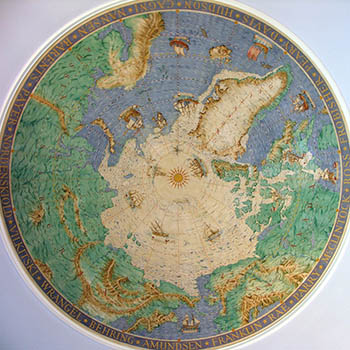
Fin Whale skeleton: Museum of Zoology
The finback whale is the second largest animal on the planet, second only to the blue whale, and the iconic 70ft skeleton at the Museum of Zoology is thought to be the largest recorded example of its kind. The whale, a male, washed up dead on a beach at Pevensey, Sussex in November 1865 – around the same time the Museum opened. Over 40,000 people flocked to see the carcass on the beach, then at Hastings Cricket Ground where it was put on public display before being brought to Cambridge.
The Museum is currently closed for refurbishment, re-opening in 2016.
Portion of the Babbage Difference Engine: Whipple Museum
The idea of a computer dates as far back as 1822 when Charles Babbage proposed that the men who calculated mathematical tables would eventually be replaced by machines that were less prone to error. However, despite £17,000 of government funding, Babbage never successfully managed to assemble a working model of his ‘difference engine’.
After his death, his son Henry took up the challenge. Using his father’s designs, Henry succeeded in building this fragment in 1879, which can perform simple calculations.
The Dancer: Kettle’s Yard
This svelte sculpture is by Henri Gaudier-Brzeska, whose work had a profound influence on Henry Moore and other modern sculptors. Born in France, but working in London from 1911 to 1914, Gaudier’s precocious talent was cut short by his death at the age of 23 in the First World War. Gaudier captured movement beautifully in The Dancer, with the uplifted arms counterbalanced by the downward motion of the feet and legs.
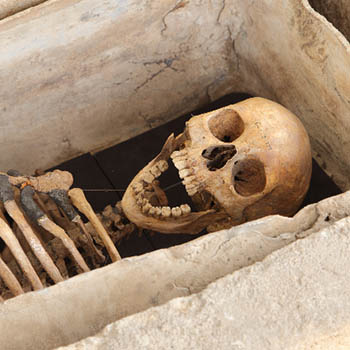
Though the outstretched arm and outward facing palm does not recall a pose from classical ballet.
Nibbled Roman skeleton: Museum of Archaeology & Anthropology
In the 1950s, the skeleton of a Roman woman was unearthed in Arbury during developments for a housing estate. But hers weren’t the only bones discovered in her lead-lined coffin. The middle-aged woman, thought to be of high status, apparently suffffered the indignity of having her ankle bone nibbled by a mouse or shrew, the remains of which were found with hers, and are also on display. The skeleton was seen by Sylvia Plath during her time at Cambridge, and inspired her poem, All the Dead Dears.
Hawking’s Black Hole Model: Whipple Museum
Cambridge University cosmologist Stephen Hawking spent much of the 1960s and 70s working on the theory and mechanics of black holes. Hawking commissioned this model to demonstrate the gravitational attraction exerted by these supermassive regions of spacetime. The downward slope of the surface at any point is a measure of the gravitational attraction experienced by a body at that distance. As nothing, not even light, can escape from within the event horizon of a black hole, the model’s ‘well’ has no bottom.
Giant Owl: Fitzwilliam Museum
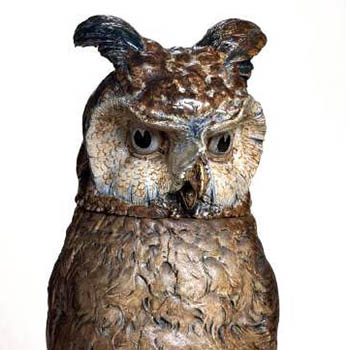
One memorable feature of the Fitzwilliam Museum is this gigantic pottery owl, which fixes visitors with a disapproving, unnerving glare in the Glaisher Gallery.
It’s actually a novelty punchbowl, with a removable head, made by the Martin brothers in 1903. Because, well, you can’t beat a monster owl for a dinner party talking point.
Mouse Brooch: Museum of Cambridge
The Museum has a large collection of folklore items from around Cambridgeshire and other areas of the country, loaned through the Folklore Society. In the Fens and Folklore room, visitors can see mole paws, corn tokens and harvest bread, which were all believed to cure or protect people in the Fens. One interesting item is the mouse skull brooch, used to ward off rheumatism.

